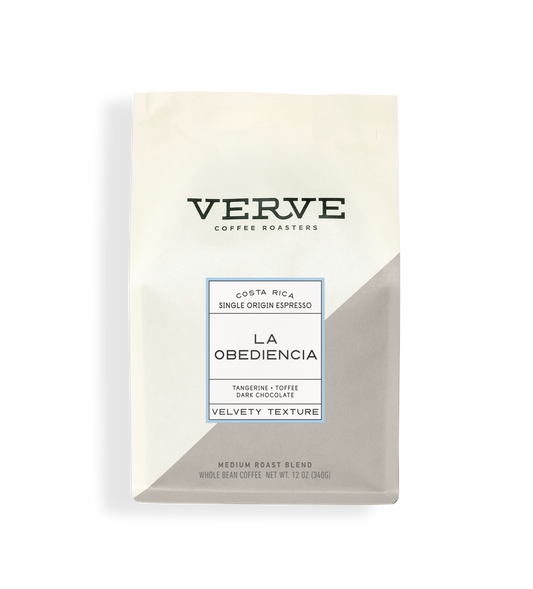Why SOE Single Origin Espresso Is Highly Rated Among Baristas
Why SOE Single Origin Espresso Is Highly Rated Among Baristas
Blog Article
Exploring the Rich Flavors of Coffee Beans: a Deep Dive Into Espresso and Blended Coffee Beans
When you discover the rich flavors of coffee beans, you uncover an intricate world where each variety brings its own character to your mug. As you browse with the art of coffee and the creative thinking behind combined coffees, you'll start to value the nuances that make each sip special.
The Beginnings of Coffee Beans: Checking Out Terroir and Flavor Profiles
When you take a sip of coffee, you're not just delighting in a drink; you're experiencing a rich tapestry of flavors formed by the beans' origins. Each region produces distinct flavor accounts affected by soil, climate, and elevation. Beans from Ethiopia often break with brilliant, fruity notes, while those from Colombia have a tendency to provide a balanced, nutty sweetness.
As you check out different beginnings, you'll see how terroir-- the ecological variables affecting a crop-- plays an essential role - Single Origin Espresso. The exact same coffee selection can taste considerably various depending upon where it's expanded
When you think about these variables, you begin to value the intricacy behind your mug. Each sip narrates of the land and the farmers who nurtured the beans. So, following time you delight, think of the journey your coffee took prior to it reached your hands, and appreciate those elaborate flavors that show its beginning.
Recognizing Coffee: The Art and Science Behind the Brew
When you think regarding coffee, it's not nearly the strong flavor; it's additionally about the strategies that bring it to life. Understanding exactly how various preparation approaches impact preference can transform your developing experience. Allow's discover the complexities of coffee prep work and reveal the distinct taste accounts that make each mug unique.
Coffee Prep Work Methods
Coffee prep work is both an art and a scientific research, combining accurate strategies with a deep understanding of coffee. To begin, you'll desire to choose top notch, fresh roasted beans and grind them finely for optimal removal (Single Origin Espresso). The work dimension is essential; also coarse, and your espresso will be weak, also fine, and it'll be bitter
The outcome must be a rich, luscious espresso with an attractive layer of crema on top. With method, you'll understand these methods.
Taste Profiles Described
The globe of coffee uses a rich tapestry of taste accounts that can elevate your coffee experience. You'll see an equilibrium of bitterness, level of acidity, and sweet taste when you take that very first sip. Each coffee bean brings unique notes, from floral and fruity to nutty and chocolaty. Light roasts usually showcase bright level of acidity and dynamic tastes, while dark roasts present deeper, bolder tones.
Recognizing these profiles aids you choose the appropriate espresso for your taste. Experimenting with different blends can reveal unexpected combinations. As an example, a well-crafted blend might balance the intense notes of an Ethiopian bean with the rich, chocolatey touches of a Brazilian bean. Welcome the journey of discovering coffee's diverse tastes, and you'll change your coffee routine into an amazing adventure.
Handling Approaches: Exactly How They Influence Taste and Scent
While it might seem that the beginning of coffee beans is one of the most substantial consider determining their flavor and scent, the processing techniques made use of post-harvest play an equally vital role. You'll locate that these approaches can dramatically modify the final preference profile of your cup.
For circumstances, the washed process gets rid of the fruit from the beans before fermentation, often bring about a cleaner, brighter flavor. On the other hand, the natural procedure leaves the fruit intact throughout drying out, resulting in a sweeter, fruitier profile.
Various other techniques, like honey handling, strike a balance, enabling some fruit mucilage to stay, offering an one-of-a-kind intricacy.
Each handling method engages with the beans' intrinsic attributes, boosting or silencing certain flavors and aromas. When you drink that espresso or blended coffee, remember that the journey from cherry to mug is affected not just by beginning but likewise by how those beans were refined.
Roasting Techniques: Opening the Full Prospective of Coffee Beans
Roasting techniques are essential for disclosing the full potential of coffee beans, as they change raw, environment-friendly beans right into the fragrant, flavorful coffee you enjoy. The choice of roasting technique-- light, tool, or dark-- drastically influences flavor accounts. Light roasts maintain the beans' natural acidity and fruity notes, while tool roasts equilibrium sweetness and richness. Dark roasts, on the various other hand, highlight bold, smoky tastes.
A slower roast at reduced temperatures enables for complex flavors to develop, while a quicker roast can increase anger. By understanding these methods, you'll expose a world of taste, raising your coffee experience to brand-new elevations.
The Magic of Blended Coffee: Creating Unique Taste Experiences
Producing a distinct taste experience with mixed coffee can transform your early morning ritual right into an exploration of taste. By incorporating different beans from various areas, you can expose a symphony of tastes that boost your cup to new elevations. Each mix offers an unique account, stabilizing body, sweet taste, and acidity to produce something truly unique.
When you pick a blend, you're not simply picking a coffee; you're picking a trip throughout diverse landscapes and cultures. Exploring with different combinations enables you to find your individual favorites, whether you enjoy fruity notes or rich, chocolatey undertones.

Sampling Notes: Acknowledging the Subtleties in Your Mug
As you sip your coffee, you might see a spectrum of flavors dancing on your taste buds, each disclosing the complexities of the beans. You might taste the intense level of acidity reminiscent of citrus or the deep, rich notes similar to dark delicious chocolate. The sweet taste could evoke honey or sugar, stabilizing the total account magnificently.
Focus on the body of the coffee-- does it really feel light and airy, or is it full and velvety? The coating, also, offers hints; a remaining aftertaste might mean nuttiness or floral undertones.

Don't fail to remember to check out the special characteristics of different beginnings, as each area passes on unique tastes - Single Origin Espresso. As an example, Ethiopian coffees often present fruity notes, while Colombian beans might display a more spherical sweet taste. By recognizing these subtleties, you'll deepen your appreciation for each and every mug, boosting your coffee experience to new heights

Developing Methods: Taking Full Advantage Of Taste Extraction for each Bean
When you discover the different brewing methods, you'll find that each method can significantly affect the flavor profile of your coffee. From French press to pour-over, each method essences various substances, improving or silencing details notes. As an example, utilizing a French press permits oils to continue to be in the brew, creating a richer preference, while pour-over stresses clearness and brightness.
Temperature level and grind size additionally play necessary functions. A coarser work functions best for chilly brews, while a fine work is ideal for coffee. Trying out water temperature-- in between 195 ° F and 205 ° F-- can reveal hidden tastes, as well.
Don't neglect regarding steeping time; a fast removal can lead to sour notes, while over-extraction might produce resentment. By adjusting these variables, you can optimize taste removal and really raise your coffee experience. Delight in the journey of discovering what approach ideal suits your palate!
Often Asked Questions
What Is the Ideal Water Temperature for Developing Coffee?
The ideal water temperature for brewing coffee's in between check my reference 195 ° F and 205 ° F. If you make use of water that's as well warm, you'll over-extract tastes; too chilly, and you will not extract sufficient. Objective for that pleasant spot for the ideal brew!
Just How Does Work Size Impact Coffee Flavor?
Grind size substantially influences coffee flavor. Better grinds extract a lot more oils and tastes, causing a bolder preference, while coarser grinds yield a lighter taste. Adjusting grind size helps you achieve your desired coffee profile.
Are There Health And Wellness Benefits Related To Alcohol Consumption Coffee?

What Is the Difference In Between Arabica and Robusta Beans?
Arabica beans are smoother and sweeter, often featuring fruity flavors, while robusta beans are stronger with a bitter preference and greater high levels of caffeine web content. You'll see these distinctions in scent and developing experience.
Exactly How Can I Store Coffee Beans for Freshness?
To keep coffee beans for freshness, keep them in a closed container, far from light, dampness, and warm. You'll keep their flavor longer if you only grind what you need right before developing.
Discovering the Abundant Flavors of Coffee Beans: a Deep Dive Into Espresso and Blended Coffee Beans.
When you discover her response the abundant tastes of coffee beans, you discover an intricate world where each variety brings its own character to your cup.When you take a sip of coffee, you're not just appreciating a beverage; you're experiencing an abundant tapestry of flavors formed by the beans' beginnings.Roasting strategies are essential for exposing the full potential of coffee beans, as they change raw, environment-friendly beans right into the aromatic, flavorful coffee you enjoy.As you sip your coffee, you could observe a spectrum of flavors dancing on your taste buds, each disclosing the complexities of the beans.
Report this page